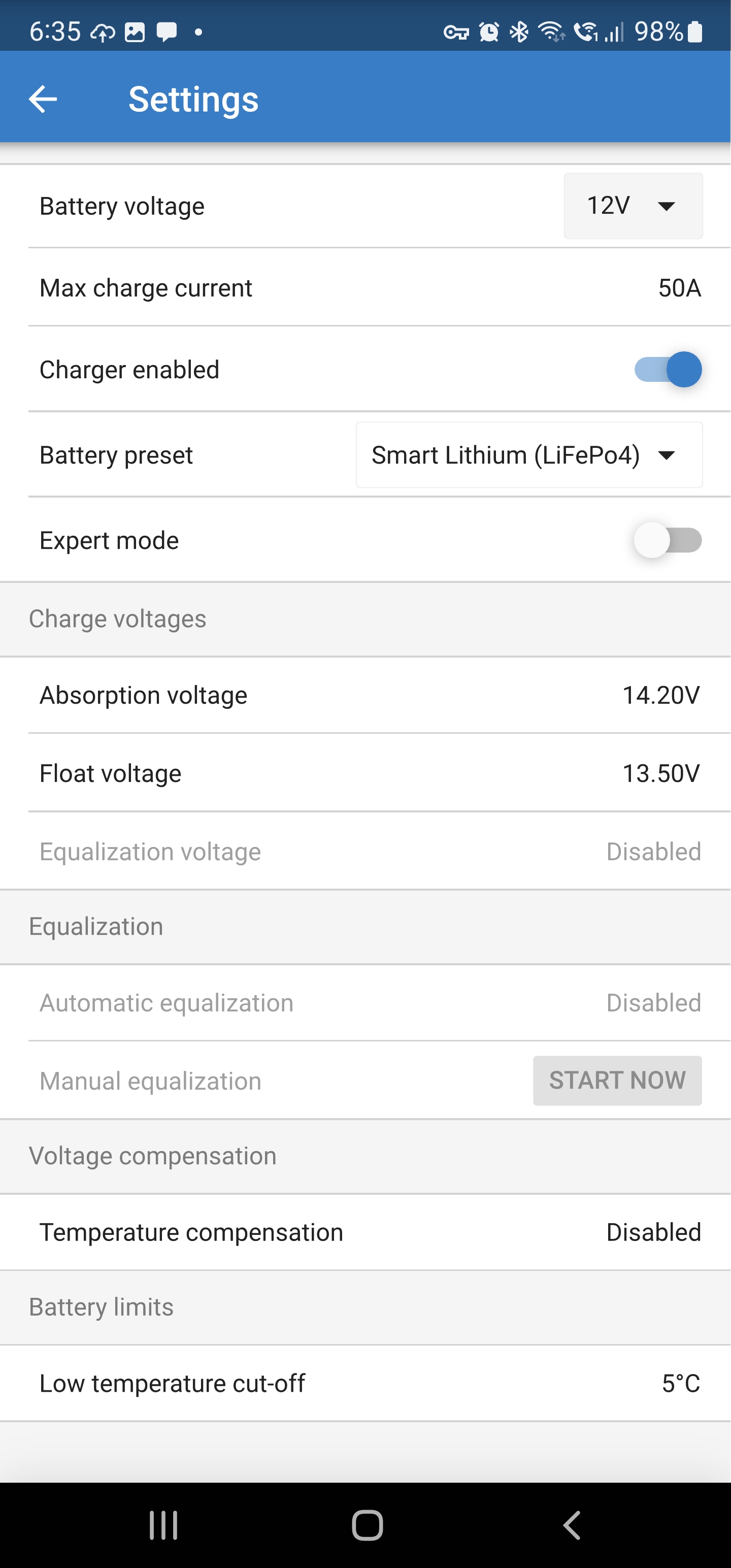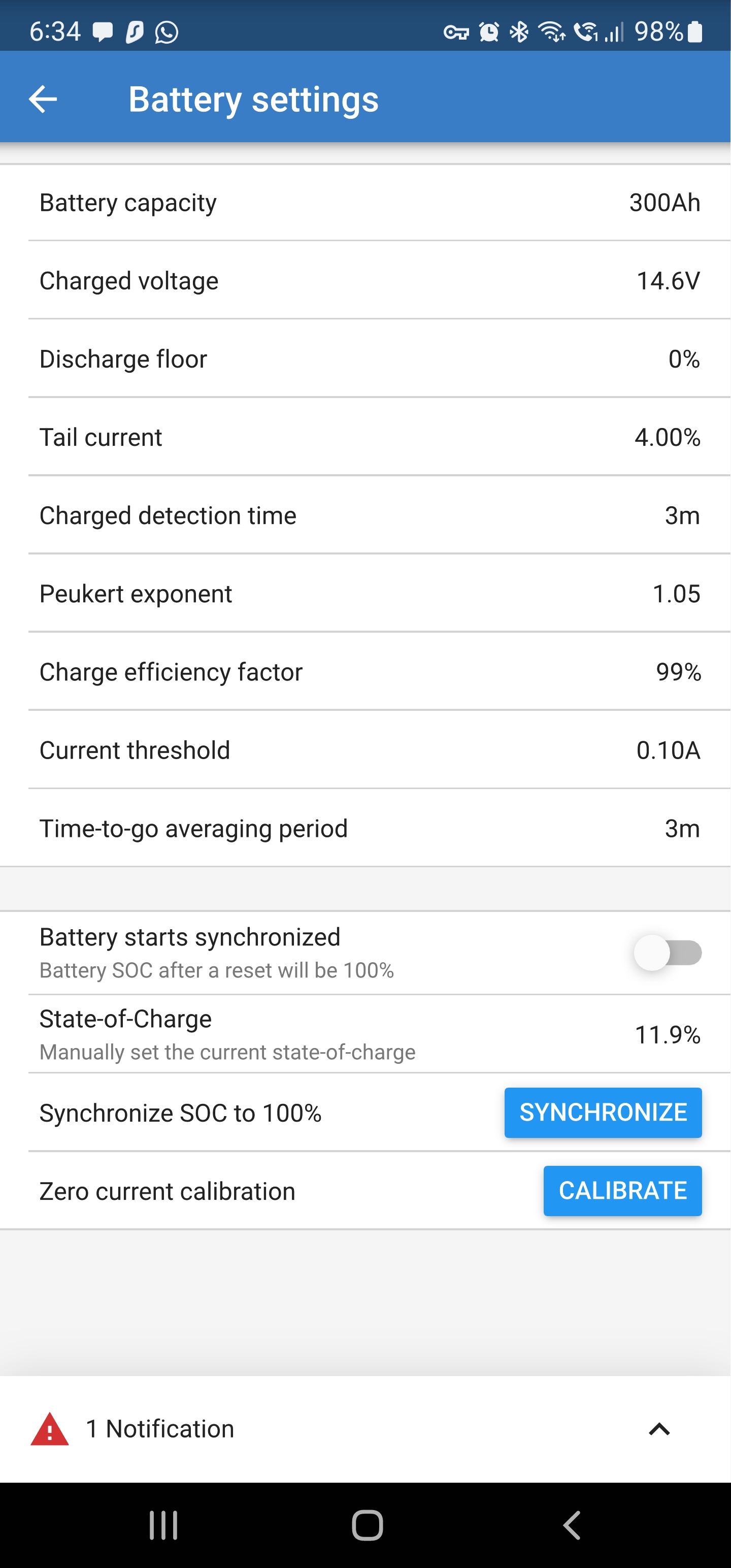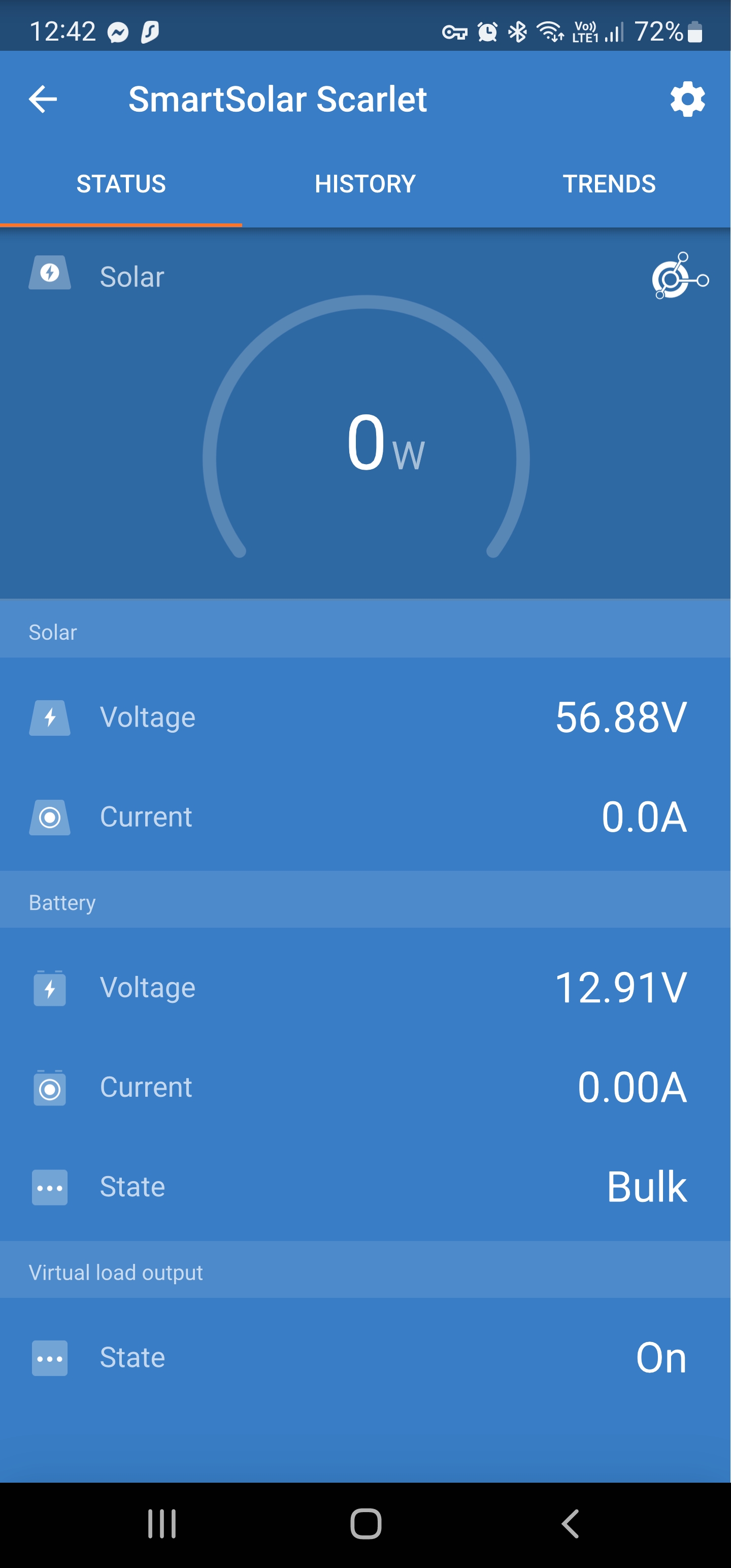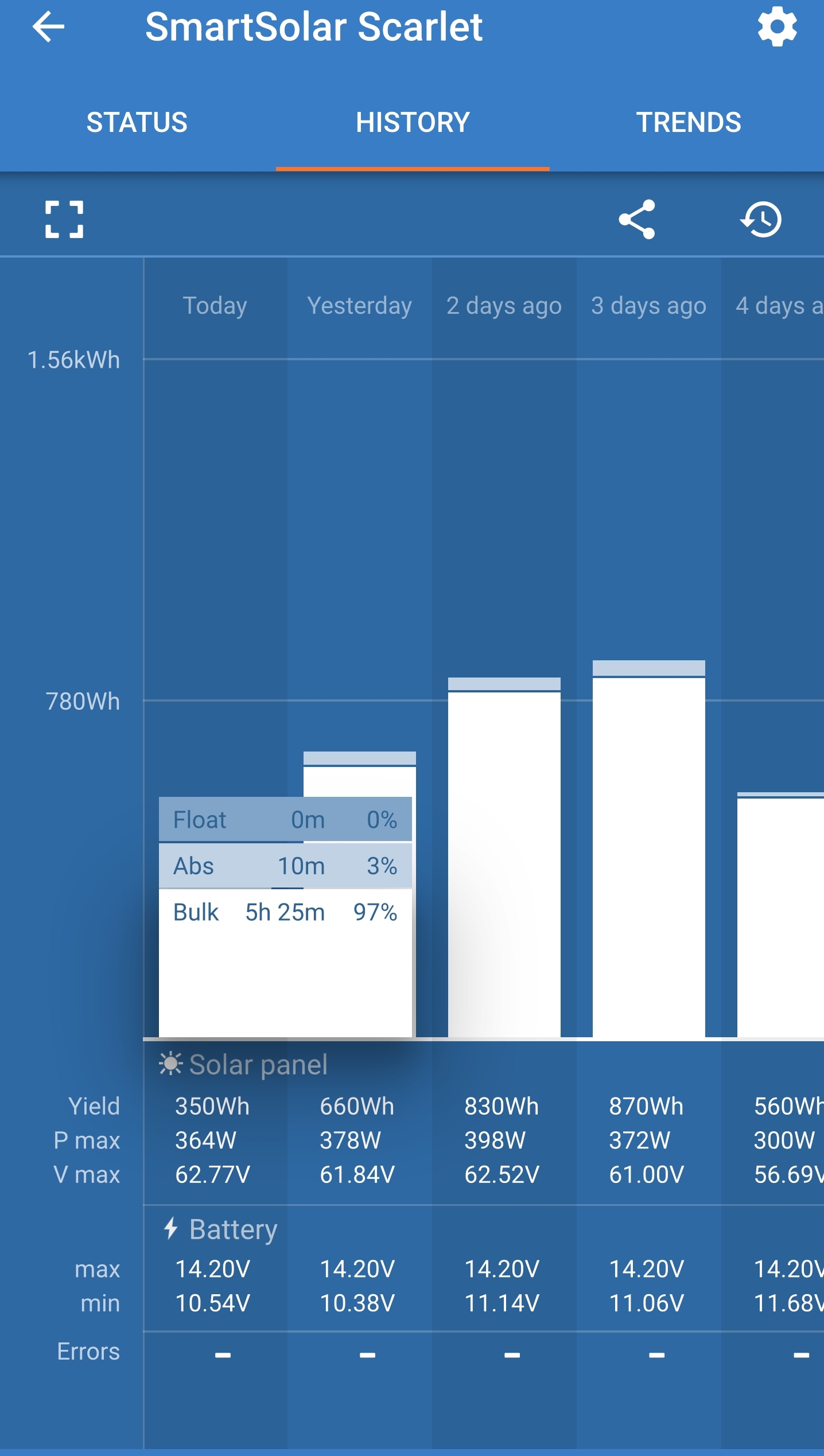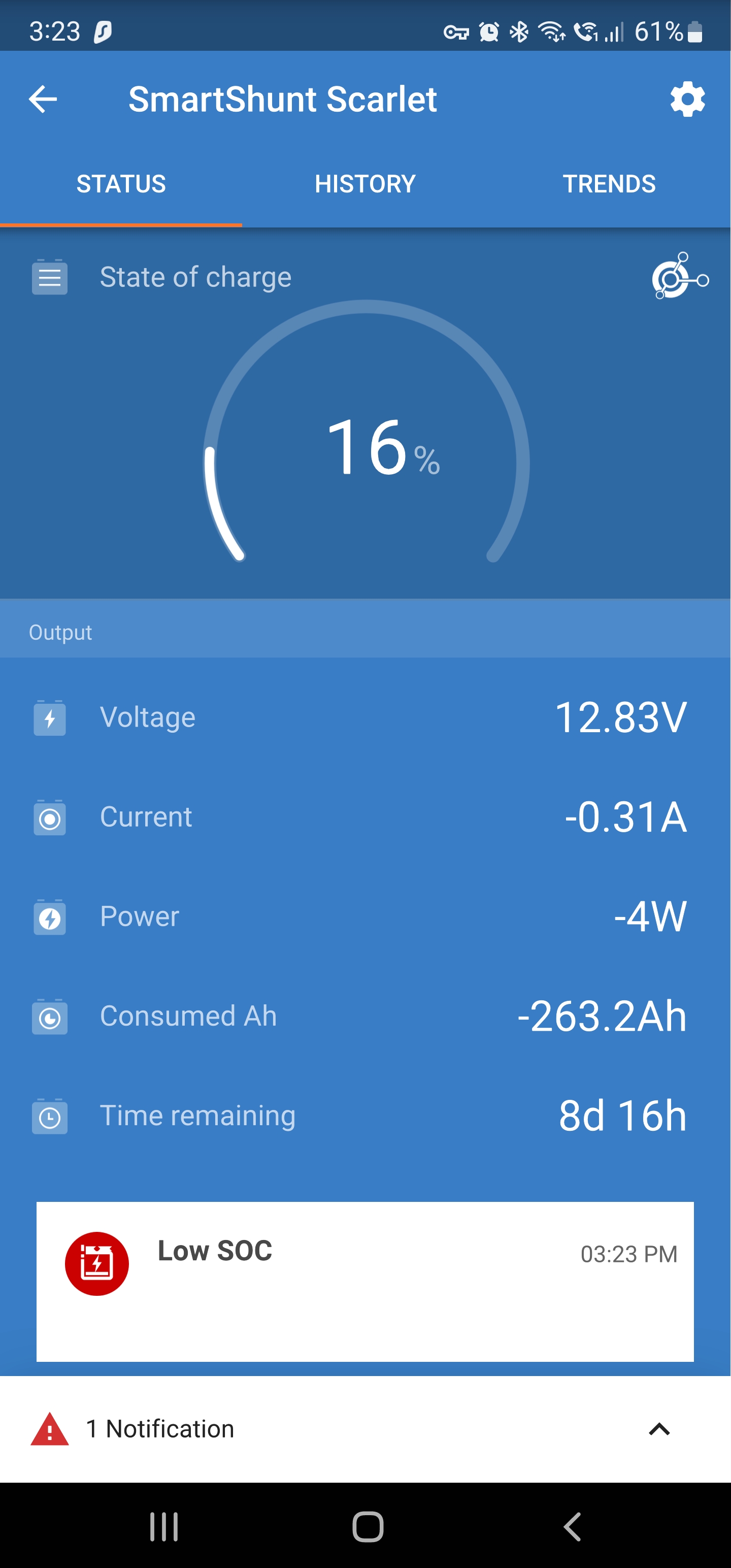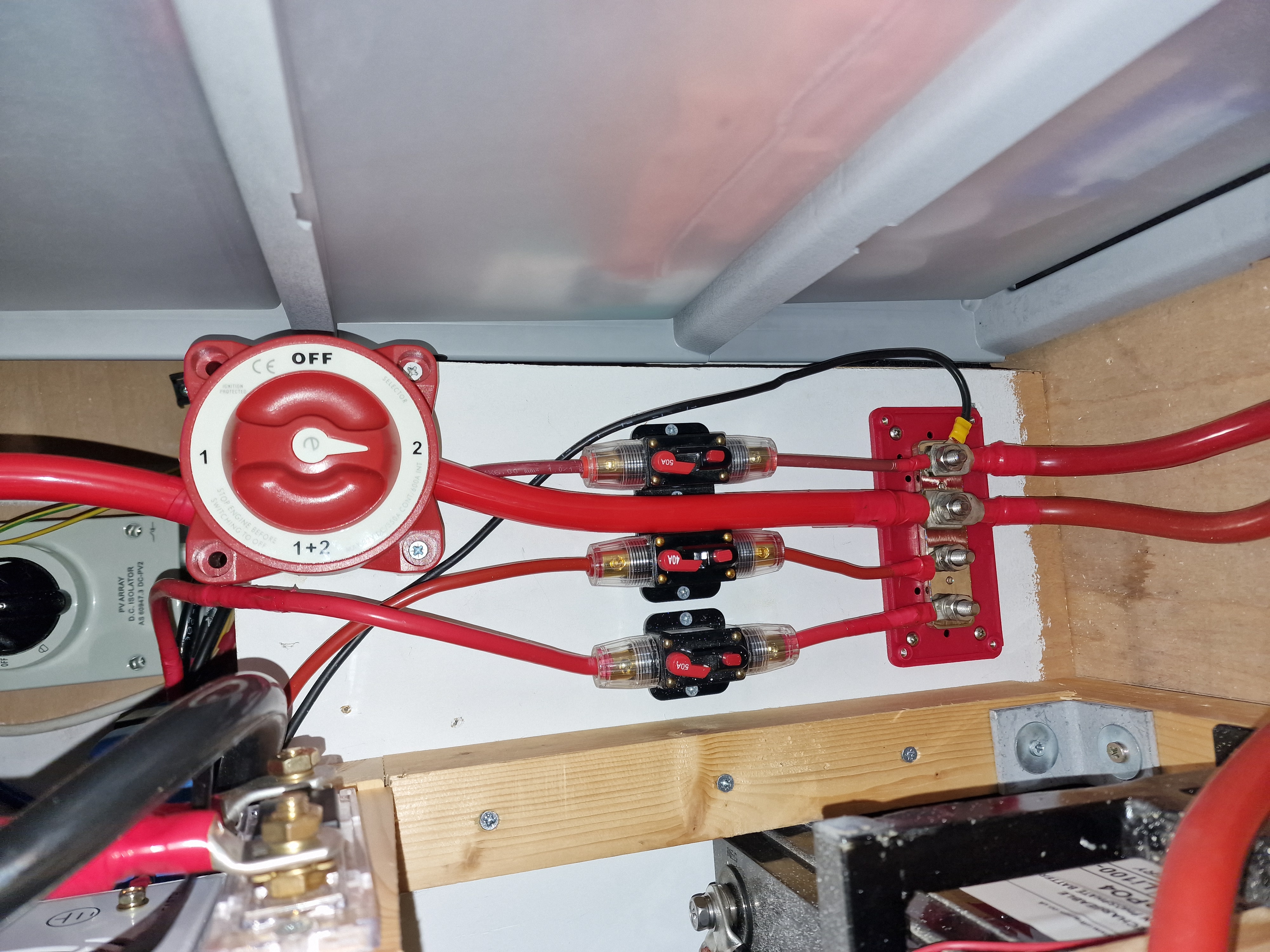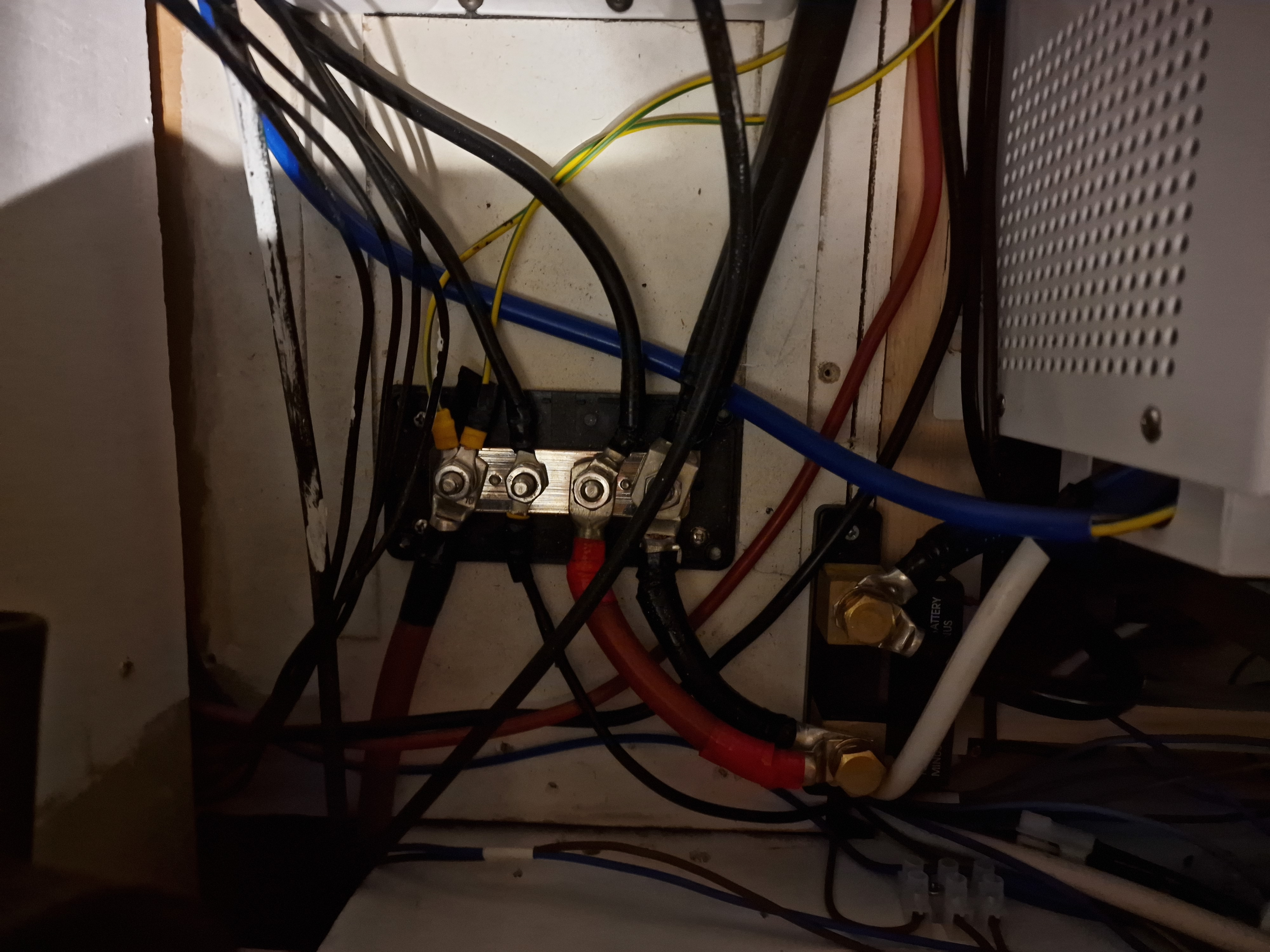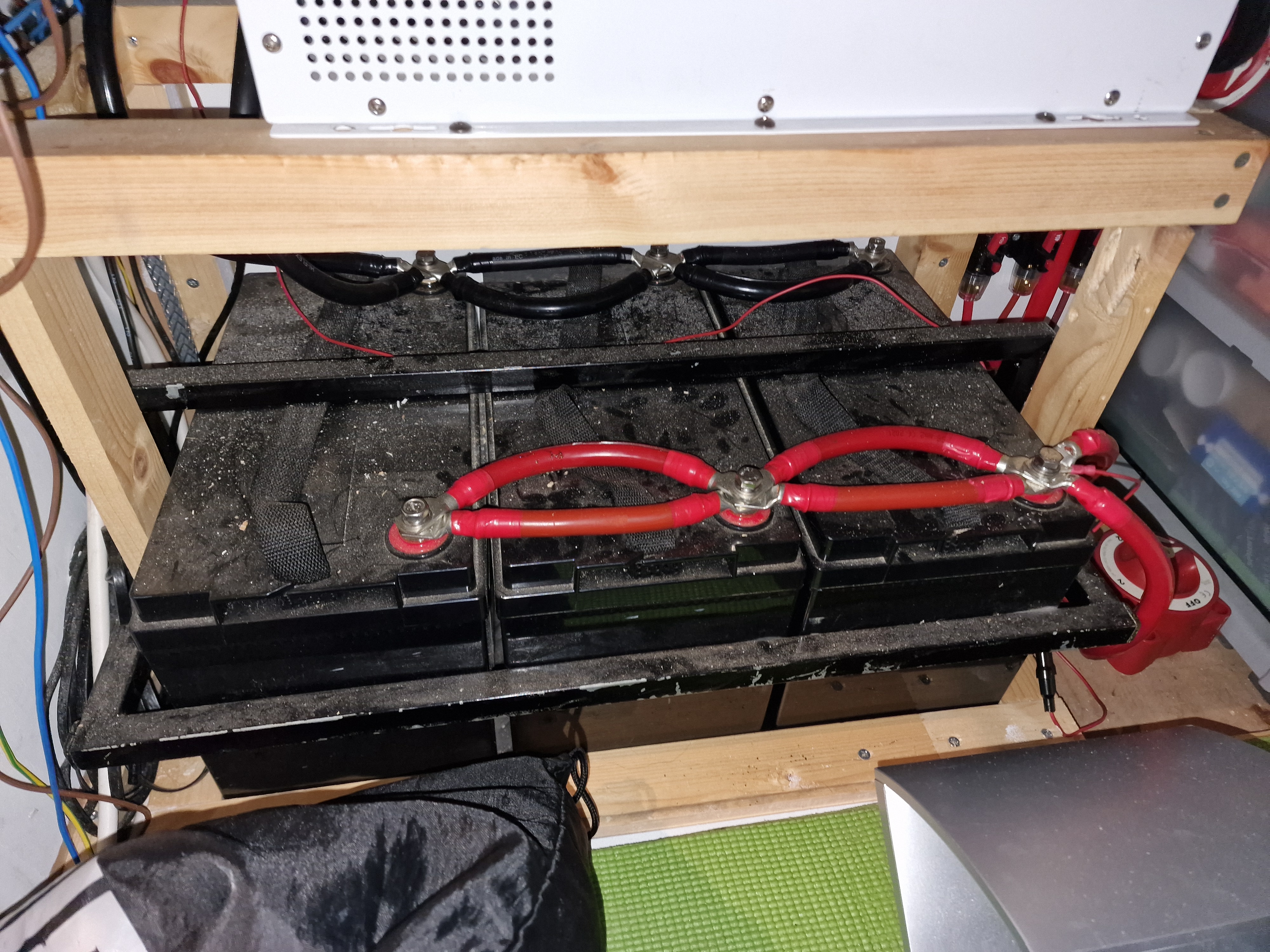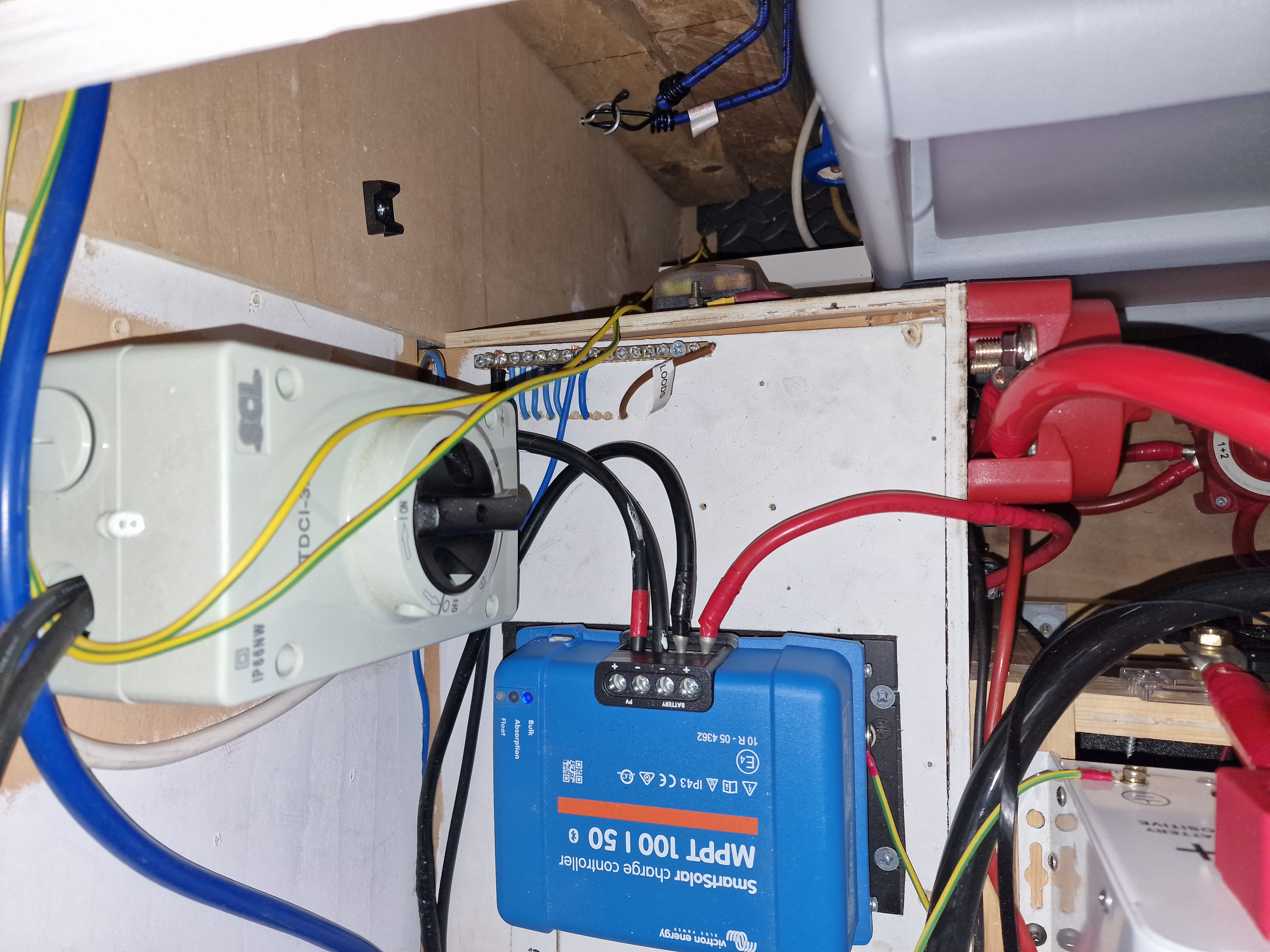Hello there,
I'm not sure if this is an issue or just me getting used to using this system full time.
I have the 100/50 blue MPPT and the 500a smartshunt. The smartshunt is showing my batteries are down at 32%, which with the weather could be accurate, however the MPPT history is showing that it entered absorption mode at some point during the day. Does this mean the batteries are actually much higher in charge than the shunt is telling me, or can the MPPT enter absorption for other reasons?
Any advice would be much appreciated.

